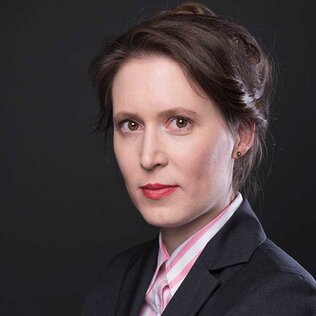BFH on the Customs Classification of Combined Machines
Clarification on the Application of Note 3 to Section XVI CN
Introduction
The correct customs tariff classification of goods is of considerable practical importance for companies. Even small differences in classification can have a decisive impact on the applicable duty rate and thus directly affect the profitability of import and export transactions. In a recent decision, the Federal Fiscal Court of Germany (BFH) dealt with the question of whether a technical module consisting of an LED array and a thermistor should be classified as a combined machine within the meaning of Note 3 to Section XVI of the Combined Nomenclature (CN), or whether it should be classified directly according to the wording of a specific tariff heading.
The outcome is of particular interest to companies importing high-tech components such as LED or sensor modules.
Background of the Case
The dispute concerned a technical module consisting of a specialized UV LED on a copper-core board and an NTC thermistor.
- Function of the module: The LED array generates almost exclusively ultraviolet radiation. The thermistor measures the surface temperature and provides information about the temperature of the LED array.
- Applications: Industrial and medical technology, in particular curing of coatings, 3D printing, fluorescence microscopy, and detection of fractures in pharmaceuticals.
The importer applied for a binding tariff information (BTI) and proposed classification under heading 8541 CN (“light-emitting diodes”) – duty rate 0%. The customs office, however, classified the module under heading 8543 CN (“electrical apparatus having an individual function, not specified or included elsewhere in this chapter”) – duty rate 3.7%. The Fiscal Court of Hamburg sided with the importer; the customs office filed an appeal.
Decision of the BFH
The BFH rejected the appeal and clarified:
- Primacy of the General Interpretative Rules (GIR 1 CN):
If a product can already be classified under the clear wording of a tariff heading, the application of Note 3 to Section XVI CN is no longer relevant. - Not a combined machine:
The module in question does not constitute a combined machine. Note 3 to Section XVI regulates how machines with multiple functions are to be classified, but it applies only subsidiarily, when no specific heading clearly applies. - No admission of appeal:
The mere fact that the Fiscal Court applied an incorrect classification approach was not sufficient to admit an appeal. A higher court ruling was unnecessary because the legal situation was clear.
Reference: Decision of 21 November 2024, VII B 76/23; ECLI:DE:BFH:2024:B.211124.VIIB76.23.0
-----------------------------------------------------------
Wording of Note 3 to Section XVI CN
“Unless the context otherwise requires, composite machines consisting of two or more machines fitted together to form a whole and machines intended to perform two or more complementary or alternative functions are to be classified as if consisting only of that component or as being that machine which performs the principal function.”
Practical Implications
The decision highlights key points for companies importing technical modules:
- Clear wording prevails: If a clear tariff heading applies under the General Interpretative Rules, this classification is binding. Subsidiary rules – such as Note 3 to Section XVI CN – do not apply.
- No “combination” for auxiliary components: The mere addition of monitoring or protective elements (e.g., thermistors) does not turn a product into a combined machine in the customs sense.
- Legal certainty through precision: When applying for a BTI, companies should clearly specify the main function of the product. Auxiliary components generally do not affect classification as long as they do not override the main function.
- Keep an eye on legal changes: The 2022 revision of the Harmonized System further clarified the classification of LED components. For future imports, the current legal framework is always decisive.
Recommendations for Companies
- Thorough analysis before import: Technical products should undergo a detailed classification review before clearance to avoid unnecessary reassessments or disputes.
- Apply for a BTI: A binding tariff information provides legal certainty – but only for three years. Timely renewal or reassessment is essential.
- Document the main function: Companies should maintain technical descriptions, datasheets, and functional analyses to demonstrate the main function to customs authorities.
- Monitor legal changes: Amendments to the Harmonized System and the Combined Nomenclature directly affect classification. Continuous legal monitoring is crucial.
- Seek legal advice: Complex high-tech products regularly involve classification risks. Early legal support helps avoid costly proceedings.
Conclusion
The BFH decision confirms a clear principle: where the wording of a tariff heading is unambiguous, there is no room for applying subsidiary classification rules. For importers, this means more legal certainty – but also the obligation to analyze and present the technical characteristics of their products with precision.
Our law firm supports you in identifying classification risks early, applying for binding tariff information, and defending your interests before the fiscal courts if necessary.
Published on 15 September 2025 by Inés Jakob, Attorney-at-Law
Your contact person

Lawyer Inés Jakob
& Certified Dangerous Goods Safety Adviser
Please send us a short email with your request to:
Or arrange immediately a free, non-binding introductory meeting using the following link:
https://zeeg.me/anwaltskanzleijakob-termin2025/meeting-link
Please note that, as an international business law firm, we do not take on private client matters.
We welcome your enquiry and are happy to assist!



